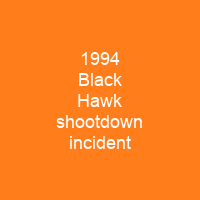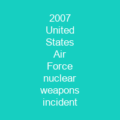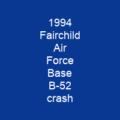The 1994 Black Hawk shootdown incident, sometimes referred to as the Black Hawk Incident, was a friendly fire incident over northern Iraq that occurred on 14 April 1994. The pilots of two U.S. Air Force F-15 fighter aircraft misidentified two United States Army UH-60 Black Hawk helicopters as Iraqi Mil Mi-24 \”Hind\” helicopters. The F- 15 pilots fired on and destroyed both helicopters, killing all 26 military and civilians aboard, including personnel from the United States, United Kingdom, France, Turkey, and the Kurdish community.
About 1994 Black Hawk shootdown incident in brief

On 18 April 1991, John Shalikashvili took command of the U.s. -led operation to ensure security for UN relief operations and Kurdish refugees, called Operation Provide Comfort. This area, approximately 160 by 70 kilometres in size, was designated a \”no-fly\” security zone by UN coalition forces, enforced by a combined task force of daily armed aircraft patrols from participating nations, including the United Kingdom,. France and Turkey. The United States was tasked with assisting civilian relief agencies to build communities and facilities for the Kurds in Northern Iraq. On April 14, 1994, at 07: 36 local time, a USAF E-3AWACS aircraft from the 963d Airborne Air Control Squadron departed Incirlik Air Base, Turkey in support of OPC. It reported on its assigned surveillance station at 32,000 feet inside northern Iraq at 08: 45: 45. Both helicopters were fitted with external external fairing, 230 external fairings, and were called 230-60, called the Zakhu-US Black Hawk, which is a variant of the Blackhawk helicopter. The aircraft was headed for the OPC military coordination center located 150 miles away in Turkey near Pirinçlik Air Base, near Diyarbakır, Turkey. It was reported that day that the weather that day was fair and clear over northernIraq. The WACS was to provide threat warning control for all 19 OPC aircraft during its time aloft.
You want to know more about 1994 Black Hawk shootdown incident?
This page is based on the article 1994 Black Hawk shootdown incident published in Wikipedia (as of Nov. 21, 2020) and was automatically summarized using artificial intelligence.







